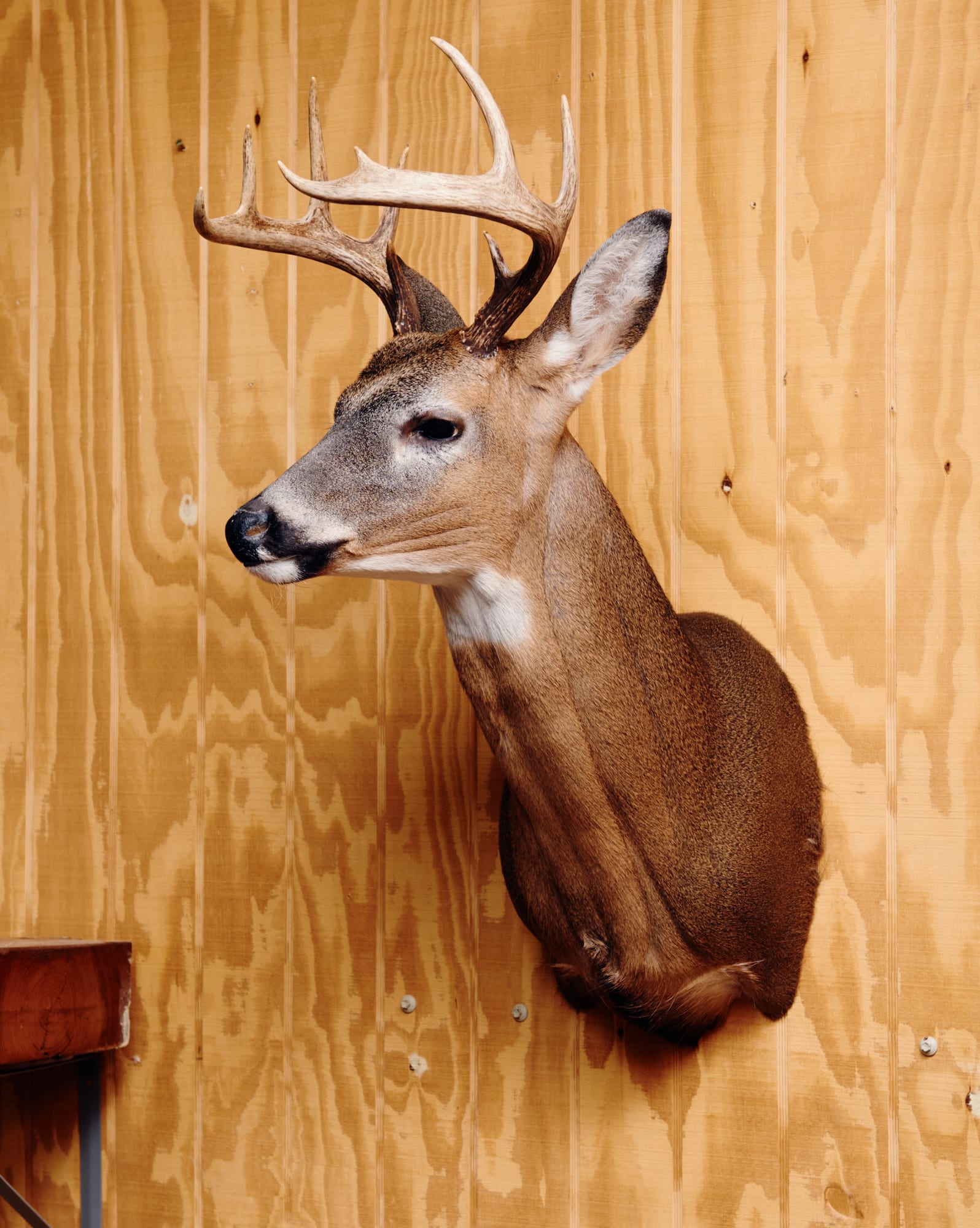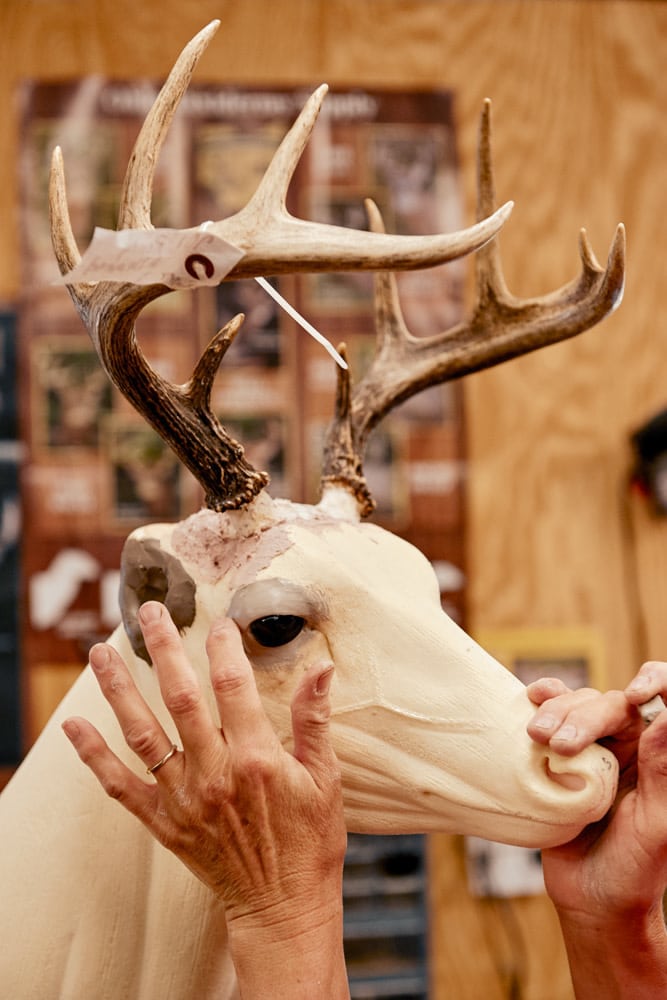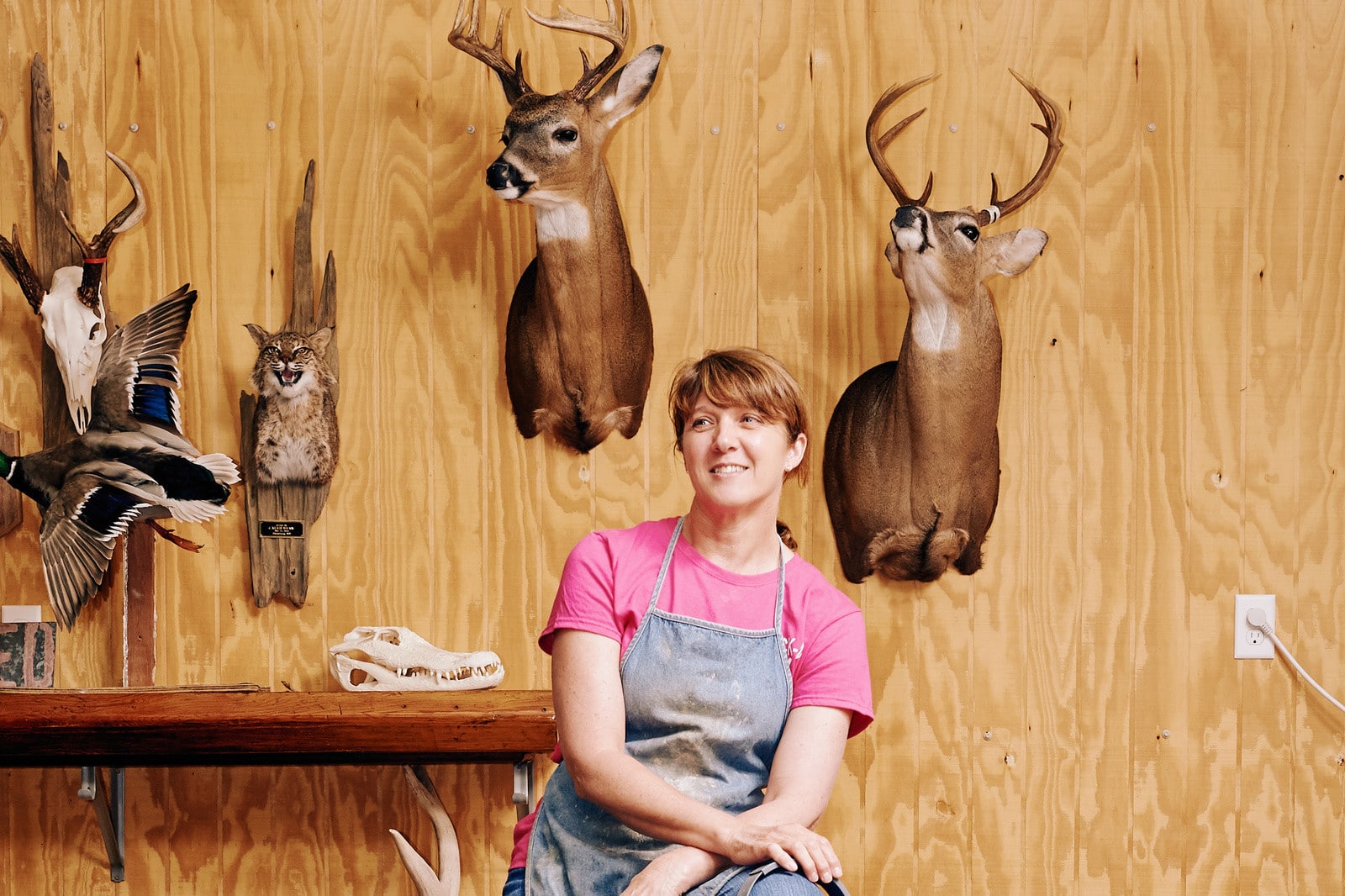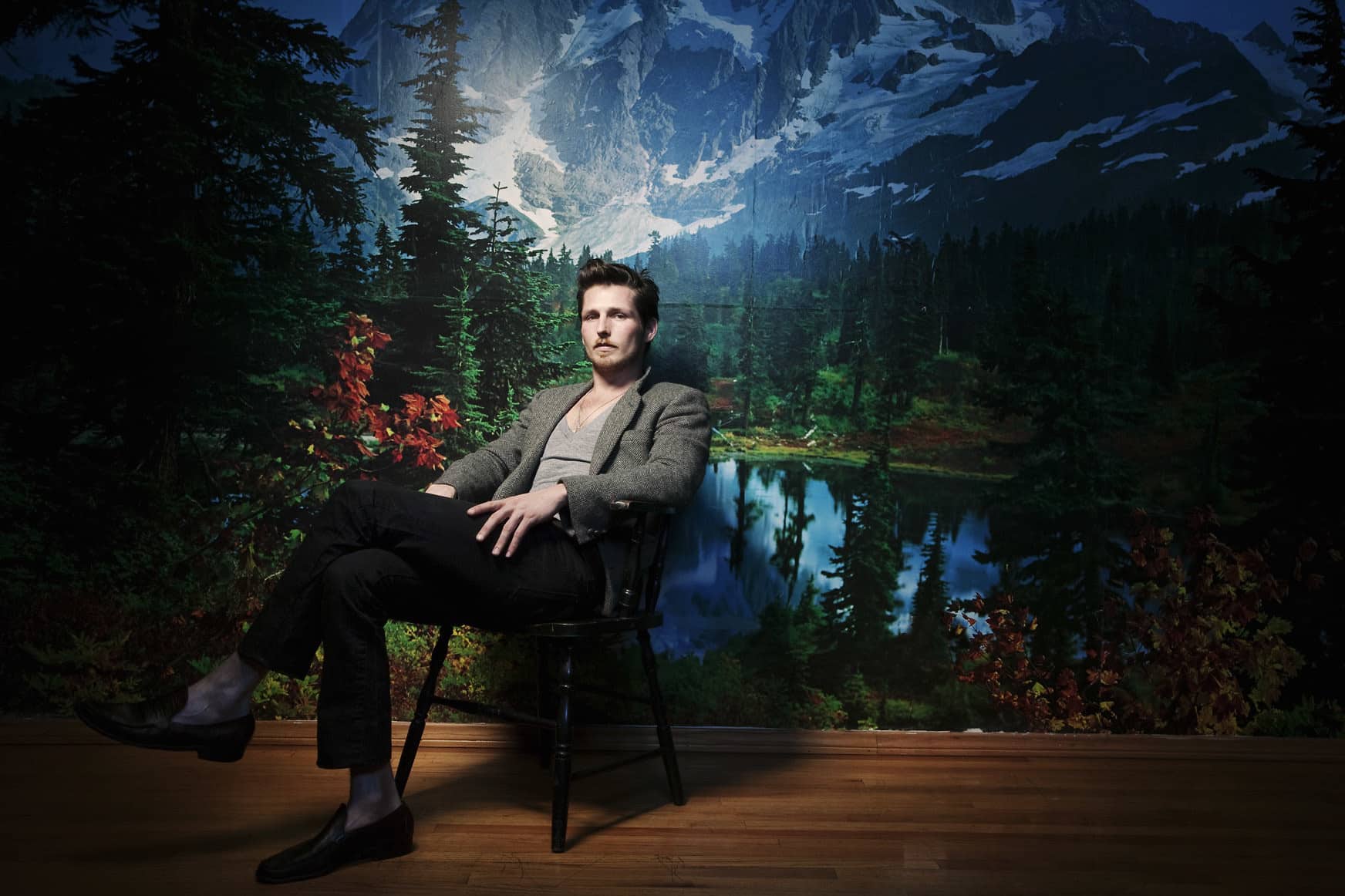We’ve all seen enough bad taxidermy to know that the practice requires an incredible amount of skill and attention to detail. It would be easy to assume, then, that becoming a taxidermist takes years of schooling and study: biology, maybe; physiology.
Not so, claims Debra Hymel, co-owner of renowned taxidermy studio Rock-n-H Taxidermy in White Castle, Louisiana. Hymel was 36 years old when she first tried her hand at taxidermy, but she’s become a go-to for customers who want to turn a trophy deer into a dear trophy. Over the phone from her home, she says, “I did no schooling. I was a postal worker, a city carrier.”
In fact, it wasn’t until she met her husband Billy, who did taxidermy as a hobby, that she considered the new career path.
“I started watching him and started helping him after a while. I really enjoyed how you could take an animal and basically bring it back to life. It wasn’t too long after I got with him that I realized I liked it. I’ve been doing taxidermy about 15 years now.”
In conversation with Format, Hymel gives us insight into a day in the life of a taxidermist, why eyes are truly the gateway to the soul and why her job sometimes keeps her up at night (it’s not why you think).
Photography by Giancarlo D’Agostaro.
Format: Hi Debra! Can you walk me through a typical workday for you?
Debra Hymel: Well, you have to plan your day a day ahead, because everything’s frozen. You have to decide what you’re going to mount, and you have to take it out and let it thaw. Let’s say we’re doing a white-tailed deer. You have to flesh it, and get it as thin as possible, and then you have to wash him and clean him up—get the blood and everything off of him—and then dry him, get him ready for mounting. Then, you have to split the lips and the ears, you have to turn them all out—take the cartilage out of the deer ears and puts ear-liners in. Then, you prep your mannequin and set the eyes, the glass eyes you put in ’em.
So you actually order a full deer body mannequin?
Correct. There’s a supply company called McKenzie Taxidermy, and they supply everything you need: eyes; mannequins; they even make replica antlers to put on, if people want to do that. They have replacement noses, tongues in case you do an open mouth—you need a tongue, ’cause you don’t use a real tongue when you mount ’em, you use an artificial one. They also have all the tools you need for doing your work.
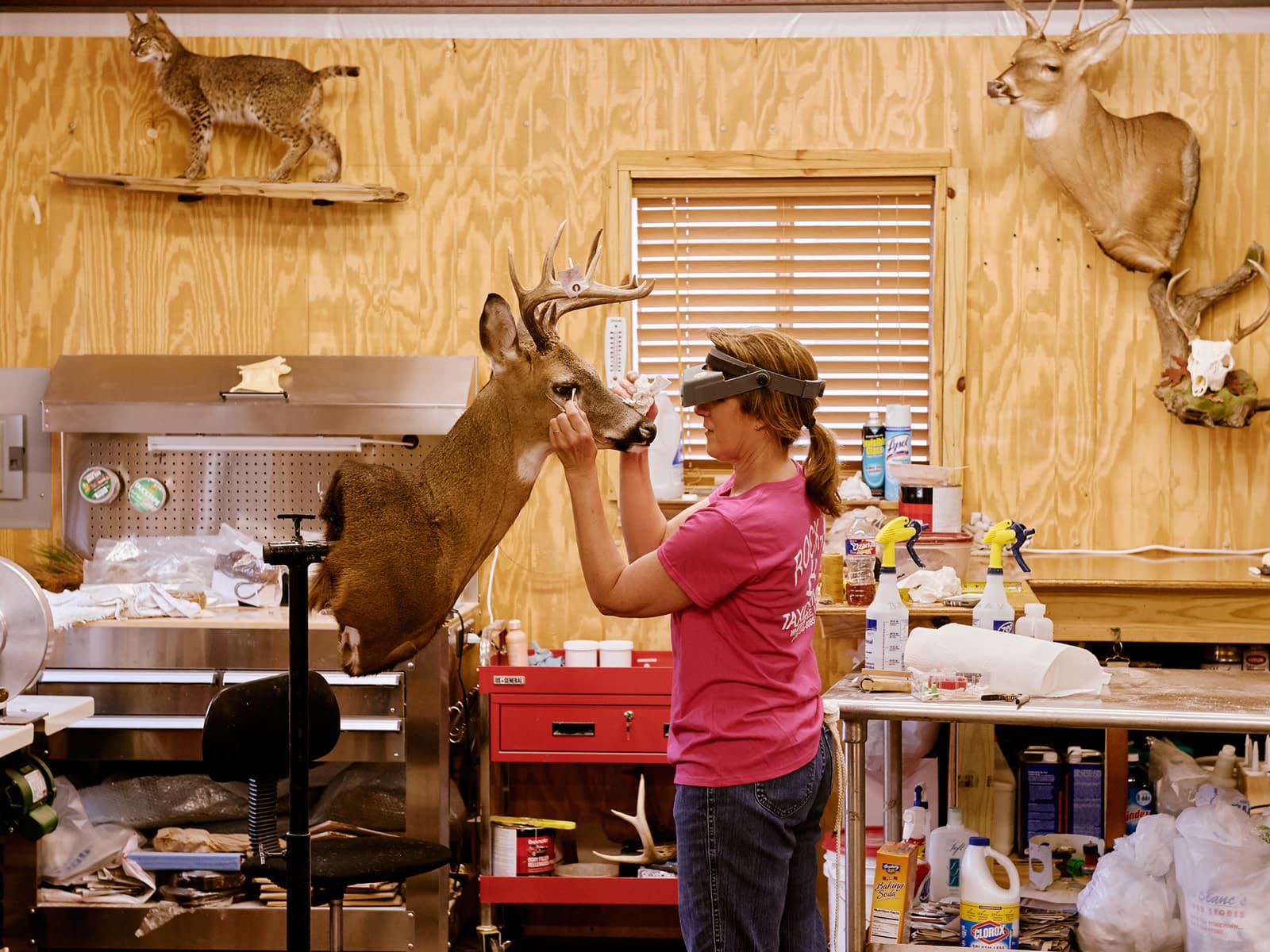
Interesting!
The eyes are your most important part, if you’re going to make it look alive again. If you don’t have your eyes set right, then to me, you messed up the whole thing. You should have your eyes set perfectly. That’s a very hard thing to do; it takes a lot of practice to get your eyes set correctly. Then, once you’ve prepped your mannequin and you have your hide all ready, you get your glue and put him on, and you get him all straight, hooked in so he’s where he needs to be.
It takes a lot of work. It takes me, to do a white-tailed, about 12 hours, maybe 15 hours to totally finish, but it’s in stages; it’s not one or two days. When I receive it, I take him and I skin him out, start working on his hide, fleshing him before I freeze him again, and then I’ll freeze him again, and make an order for the size of mannequin he needs. Then, when I’m ready to mount that particular animal, that’s when I take him out the night before.
There’s a bit of an obsession on the internet with photos of bad taxidermy, because it can make the animal look so silly. How long did it take you to get to a point where your animals looked lifelike?
It takes a really long time. For me, personally, I used to let my husband set my deer eyes for me, because I was never confident with it. It was years layer before I actually said, ‘I’m gonna do it!’ because of watching him do it and seeing live deer, seeing deer come in and examining them, looking at their features and trying to get all of that straight, to use as reference. Now I do it and have been for a few years now, and since my husband hasn’t been doing it, he got out of the groove of it, so now I set them better than he does. If I set one and he sets one, we’d rather mine than his.
For different people, I’m sure it would take different amounts of time, but it took me years. And it wasn’t as soon as I tried it, I got it. It took a lot of practice—that’s on any animal, not just deer.
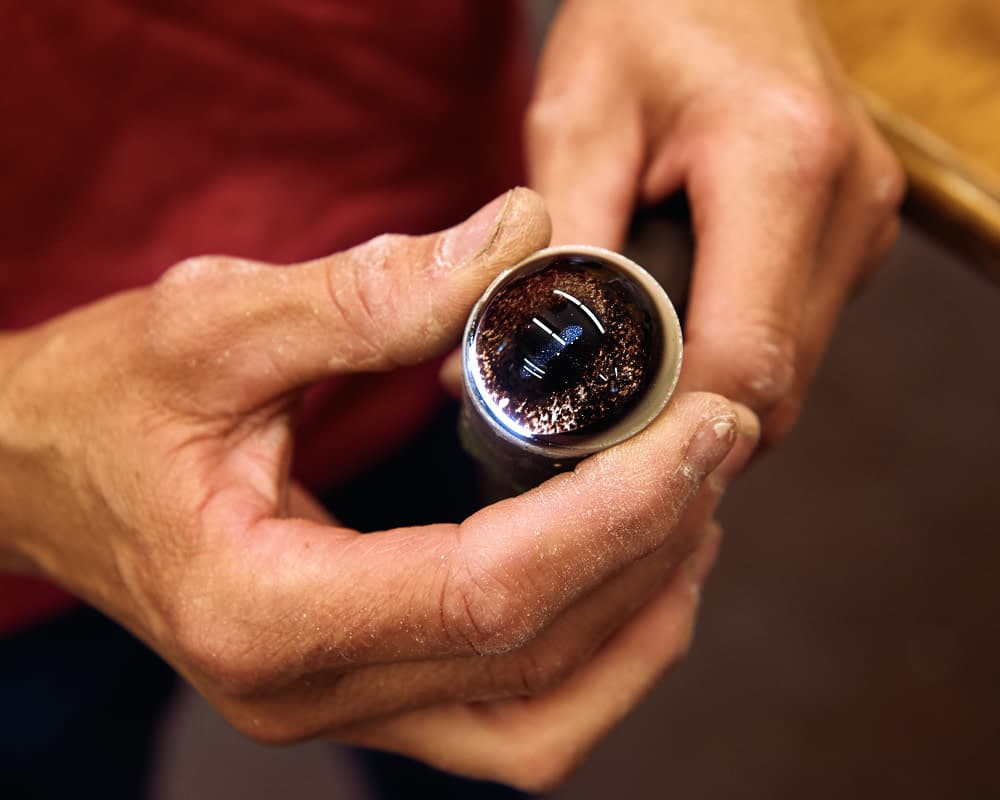
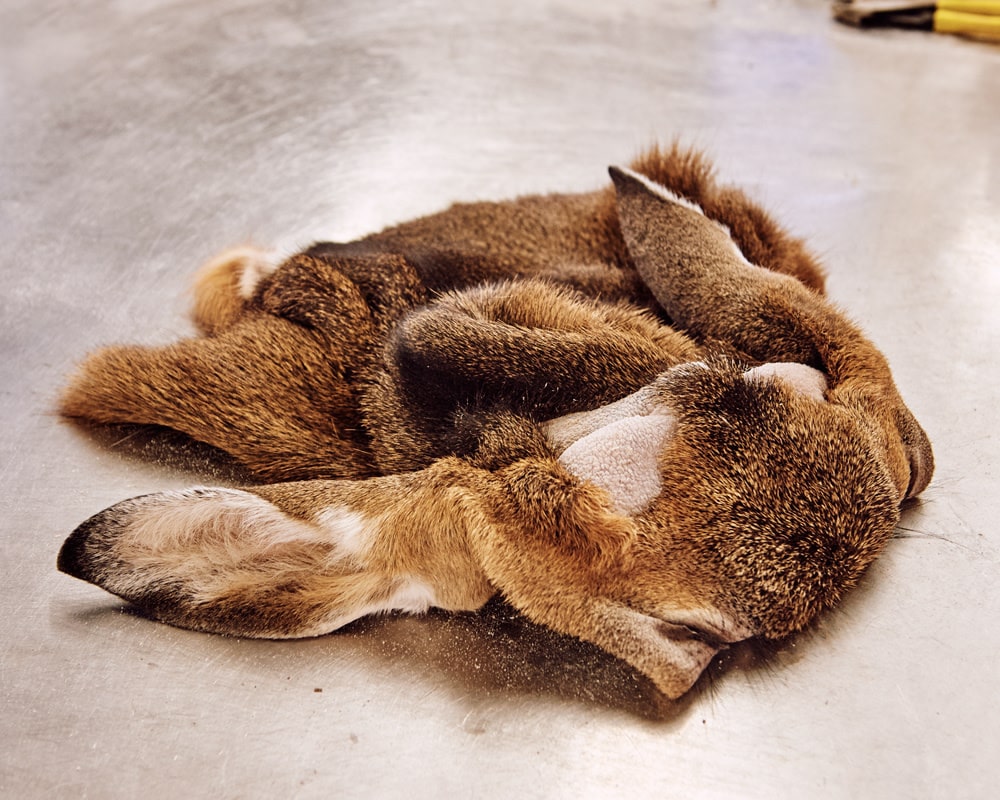
Is it harder to do it on smaller animals, like birds?
It depends on the bird. Some birds, like wood ducks, have very thin skin compared to mallards or a Canada goose—they have very tough skin. Just like deer, birds vary in their own way: some have thick skin, some have thin skin, some maybe have one white eyelash. I’ve seen that in a few deer. I’ll point that kind of thing out to the customer, because they don’t see that. Mostly, they see the antlers on a deer, more than they see the actual deer. Me, I see the deer, not the antlers.
You’re seeing the work to be done.
Exactly.
So you didn’t take any schooling at all, to learn about animal biology, physiology, and such? You learned on the job?
Correct. I did no schooling.
Would you call yourself an animal lover?
Yes.
A lot of people might find the work you do emotionally draining. As someone who loves animals, how do you steel yourself against thoughts of mortality, and simply, handling dead animals?
I tell people that, well, I hunt too. I love hunting, and I love animals. I kill an animal not to kill it, or to let it die. I kill an animal to eat it, and to mount it, and to enjoy it for the rest of my life. To see the beauty of what was alive in the woods alive in my home.
Do you ever go look at other taxidermy to get inspired, to learn from other taxidermists?
Yes, I do. I enjoy seeing other people’s taxidermy work, seeing how they do things and learning from them, maybe seeing something that they didn’t do right or them doing the same to me. We critique each other’s work, which is a good thing.
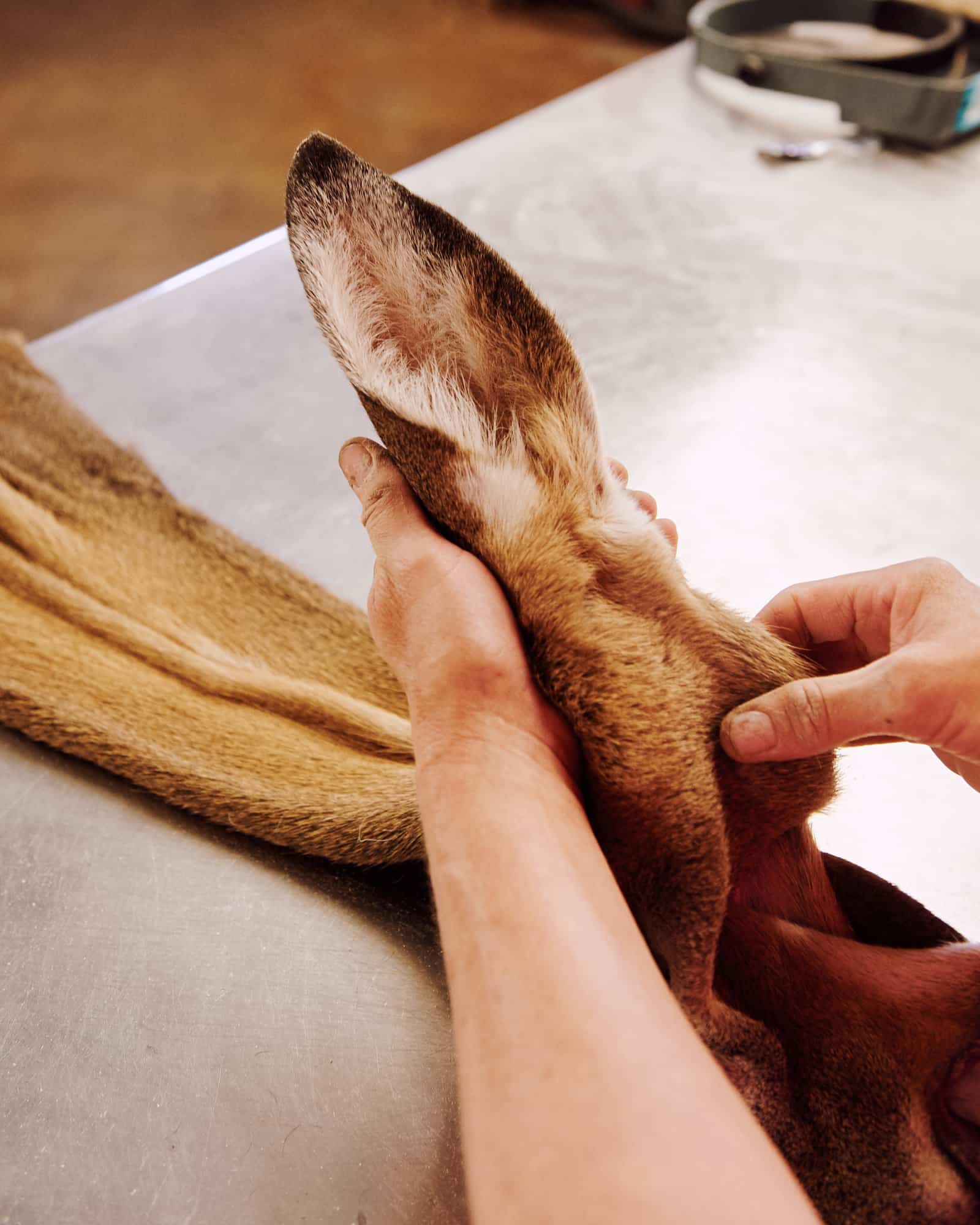
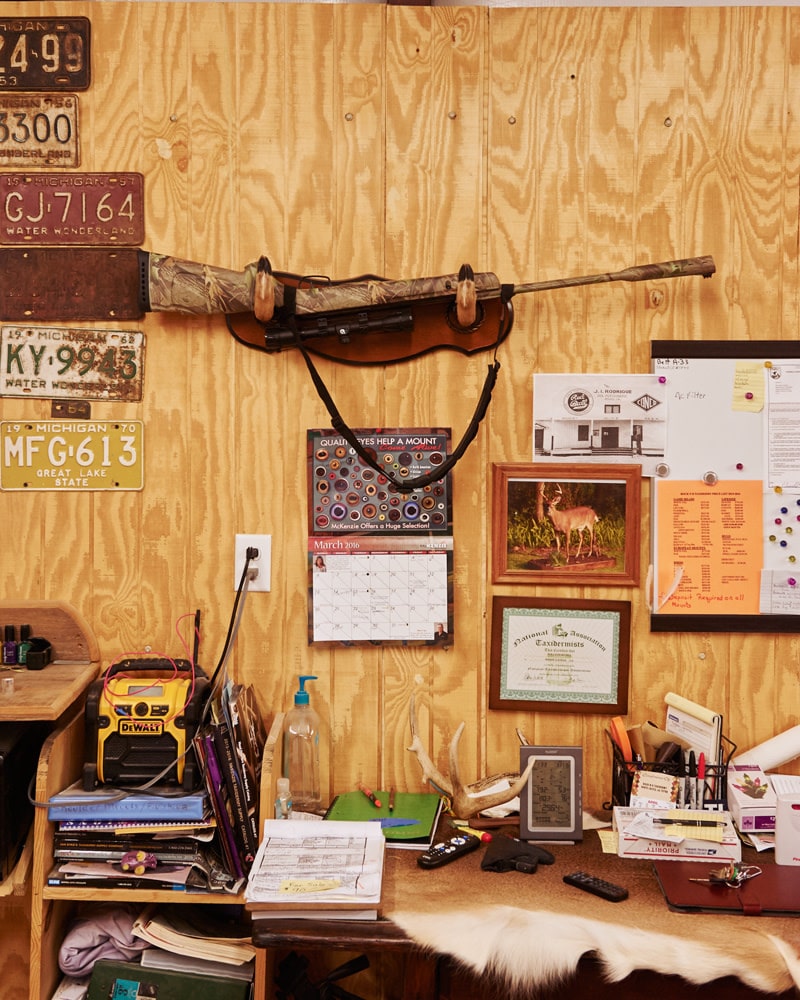
Do you ever work on people’s pets?
People have asked, but no, we don’t do pets. It’s not the same as doing a wild animal, a pet and companion that’s been with them for years.
The pressure would be too intense.
Yeah.
So do you keep 9-to-5 hours in the workshop and then call it quits around then, or…?
I have basically no set hours. My workshop is right next to my house, so I come in here and work, but I can go back and forth to my shop. It’s not always eight hour days—some days I work as late as midnight. I’ll work 12 or 15 hours a day sometimes, and I’ll work four hour days sometimes. It depends what I’m working on, ’cause like I said, you have to plan your day ahead, or at least the majority of it. If I don’t finish something I started in the morning, then the next morning I can just make it a short day and finish up what I was doing. My hours can’t be set in stone.
During the hunting season, people will kill deer and then find them late at night and have nowhere to put them. It’s hot down here, so people will call us and we’ll wake up, go pick it up from them, do what we need to do and go back to bed!
You put them in a walk-in freezer.
Yes, I do.
Thanks, Debra. One last question: What has been the most unexpected thing you’ve learned through your work?
I’m gonna say this: there’s more than one way to skin a cat. It’s true!
